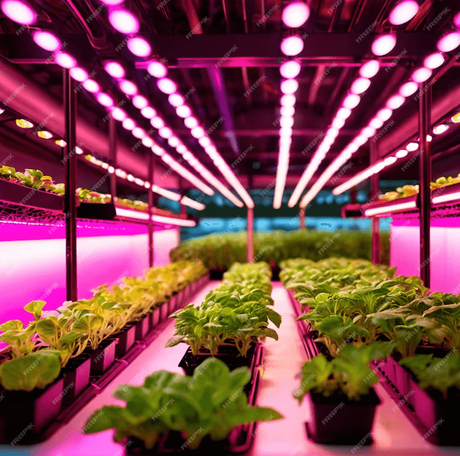The cultivation of cannabis has rapidly evolved from a niche activity to a significant agricultural industry. With the increasing legalization of cannabis for both medicinal and recreational use, there is growing interest in its commercial cultivation. However, estimating the operating costs and potential profits in cannabis cultivation is a complex process that requires careful consideration of various factors. This article provides a comprehensive guide to help prospective cannabis cultivators assess these crucial financial aspects.
1. Initial Investment Costs
Starting a cannabis cultivation operation involves substantial initial investments. These costs include land or facility acquisition, equipment, and setup expenses.
1.1 Land or Facility Acquisition
The cost of land or a facility depends on the location, size, and whether the property is owned or leased. Urban areas tend to have higher property costs, while rural areas may offer more affordable options. Additionally, indoor cultivation requires a facility that can be adapted to controlled-environment agriculture (CEA), which can be more expensive than outdoor cultivation.
1.2 Construction and Setup Costs
For indoor or greenhouse cultivation, significant investment is required in building or retrofitting the facility. This includes installing HVAC systems, lighting, irrigation, and security measures. The cost of construction or retrofitting can vary widely depending on the complexity of the setup and the quality of materials used.
1.3 Licensing and Compliance
Obtaining the necessary licenses and permits for cannabis cultivation is a critical step and can be costly. Fees vary by region and may include application fees, annual renewal fees, and costs associated with meeting regulatory requirements, such as security systems and testing protocols.
2. Operational Costs
Once the initial setup is complete, ongoing operational costs must be managed carefully to ensure profitability. These include labor, utilities, nutrients, and other inputs required for cultivation.
2.1 Labor Costs
Labor is one of the most significant operational expenses in cannabis cultivation. This includes the cost of hiring cultivation managers, growers, trimmers, and other staff. The number of employees needed depends on the size of the operation and whether it is automated or requires manual labor. Additionally, labor costs vary depending on local wage laws and the level of expertise required.
2.2 Energy and Utilities
Cannabis cultivation, particularly indoor growing, is energy-intensive. The cost of electricity for lighting, heating, cooling, and ventilation can be substantial. For example, high-intensity discharge (HID) lights and HVAC systems consume large amounts of electricity, which can lead to high utility bills. Some growers may opt for energy-efficient LED lights or explore renewable energy options to reduce costs.
2.3 Nutrients and Growing Mediums
Cannabis plants require specific nutrients to thrive, and the cost of these inputs can add up. Fertilizers, soil amendments, and hydroponic solutions are essential for plant health and yield. The choice of growing medium (soil, coco coir, hydroponics, etc.) also impacts costs. Bulk purchasing and careful nutrient management can help control these expenses.
2.4 Water and Irrigation
Water is a vital resource in cannabis cultivation, and efficient irrigation systems are necessary to optimize water use. The cost of water varies depending on the source (municipal, well, etc.) and the region. Drip irrigation systems are often preferred for their water efficiency, but they require an initial investment in equipment.
2.5 Pest and Disease Management
Maintaining a healthy crop involves regular monitoring and management of pests and diseases. Integrated Pest Management (IPM) strategies, which include biological controls, organic pesticides, and regular inspections, can help minimize the impact of pests and diseases. The cost of IPM programs varies depending on the methods used and the scale of the operation.
3. Production Yield and Quality
Estimating the yield and quality of the cannabis crop is crucial for forecasting revenue and profitability. Several factors influence yield, including the cultivation method, strain selection, and environmental controls.
3.1 Cultivation Method
The choice between indoor, greenhouse, and outdoor cultivation significantly impacts yield and quality. Indoor cultivation offers the most control over environmental factors, leading to potentially higher yields and better quality but at a higher cost. Greenhouse cultivation provides a balance between cost and control, while outdoor cultivation is the least expensive but subject to environmental variability.
3.2 Strain Selection
The choice of cannabis strains affects both yield and market value. Some strains are known for high yields, while others are prized for their potency or unique terpene profiles. Cultivators must consider market demand and their target audience when selecting strains to grow.
3.3 Environmental Control
Maintaining optimal growing conditions (temperature, humidity, CO2 levels, etc.) is essential for maximizing yield and quality. Indoor and greenhouse cultivators have more control over these factors compared to outdoor growers, but this control comes at a cost. Advanced environmental control systems can be expensive but are necessary for producing premium-quality cannabis.
4. Revenue Streams
Understanding potential revenue streams is key to assessing profitability. Cannabis cultivators can generate income through various channels, including wholesale, retail, and value-added products.
4.1 Wholesale vs. Retail Sales
Selling cannabis wholesale typically involves lower margins but higher volume, while retail sales can offer higher margins but require more effort in terms of marketing and customer service. Cultivators must decide whether to focus on one channel or diversify their sales strategy.
4.2 Value-Added Products
Creating value-added products, such as edibles, extracts, or topicals, can significantly increase profitability. However, producing these products requires additional equipment, expertise, and regulatory compliance. Cultivators must weigh the potential revenue against the costs and risks associated with value-added production.
4.3 Cannabis Market Trends
Staying informed about market trends is essential for maximizing revenue. Market prices for cannabis can fluctuate based on supply and demand, regulatory changes, and consumer preferences. Cultivators must be agile and responsive to these trends to capitalize on market opportunities.
5. Risk Management and Contingency Planning
Like any agricultural venture, cannabis cultivation is subject to risks that can impact profitability. Effective risk management strategies are essential to protect the business from potential losses.
5.1 Crop Insurance
Obtaining crop insurance can mitigate the financial impact of crop failure due to natural disasters, pests, or diseases. Insurance premiums vary based on the level of coverage and the specific risks associated with cannabis cultivation.
5.2 Diversification
Diversifying the crop portfolio by growing multiple strains or other complementary crops can reduce the risk of total crop failure. This strategy also allows cultivators to tap into different market segments and reduce dependency on a single product.
5.3 Contingency Planning
Having a contingency plan in place for unexpected events, such as regulatory changes, market downturns, or supply chain disruptions, is critical. This plan should include strategies for reducing expenses, securing alternative revenue streams, and maintaining business continuity.
6. Profitability Analysis
To determine the profitability of a cannabis cultivation operation, it is essential to perform a detailed financial analysis that includes revenue projections, cost analysis, and profit margins.
6.1 Revenue Projections
Estimating revenue involves calculating the expected yield per harvest, the number of harvests per year, and the market price per unit of cannabis. Cultivators should consider both best-case and worst-case scenarios to account for variability in yield and market prices.
6.2 Cost Analysis
A thorough cost analysis should include all fixed and variable costs associated with cultivation. Fixed costs include property leases, equipment depreciation, and licensing fees, while variable costs cover labor, utilities, and inputs like nutrients and water. Understanding these costs helps in setting appropriate pricing strategies and profit margins.
6.3 Break-Even Point
The break-even point is the production level at which total revenue equals total costs. Calculating the break-even point helps cultivators understand the minimum yield required to cover costs and begin generating profit. This metric is crucial for long-term financial planning and sustainability.
6.4 Profit Margins
Profit margins in cannabis cultivation can vary widely depending on the scale of the operation, cultivation method, and market conditions. A healthy profit margin allows for reinvestment in the business, such as upgrading equipment, expanding production, or developing new products.
7. Regulatory and Legal Considerations
The cannabis industry is highly regulated, and compliance with legal requirements is essential for avoiding fines, penalties, and legal challenges.
7.1 Compliance Costs
Maintaining compliance with local, state, and federal regulations can be expensive. This includes costs associated with regular inspections, testing, record-keeping, and reporting. Non-compliance can result in significant financial penalties and damage to the business's reputation.
7.2 Taxation
Cannabis businesses are subject to various taxes, including excise, sales, and income taxes. The effective tax rate for cannabis businesses can be higher than other industries due to the limited deductions allowed under IRS Code Section 280E. Cultivators must factor in these taxes when estimating profitability.
7.3 Intellectual Property
Protecting intellectual property, such as unique strains or proprietary cultivation methods, can provide a competitive advantage. However, obtaining patents or trademarks involves legal costs and ongoing maintenance fees. Cultivators should consider the potential benefits of intellectual property protection against the associated costs.
8. Case Studies and Real-World Examples
Analyzing case studies and real-world examples of successful cannabis cultivation businesses can provide valuable insights into best practices and common pitfalls.
8.1 Small-Scale Cultivation
A case study of a small-scale, boutique cannabis farm may highlight the challenges and opportunities in niche markets. This example could demonstrate how quality, branding, and customer engagement are critical for success in a competitive market.
8.2 Large-Scale Cultivation
A case study of a large-scale, commercial cannabis operation may focus on the efficiencies gained through automation, economies of scale, and strategic partnerships. This example could illustrate how large operations manage high operating costs and regulatory complexities.
8.3 Vertically Integrated Operations
A case study of a vertically integrated cannabis company, which handles cultivation, processing, and retail, may offer insights into the advantages and challenges of controlling the entire supply chain. This example could explore how vertical integration impacts costs, margins, and market positioning.
Conclusion
Estimating the operating costs and profits in cannabis cultivation requires a detailed understanding of the factors that influence both expenses and revenue. By carefully considering initial investments, ongoing operational costs, yield potential, revenue streams, and regulatory requirements, cultivators can develop a realistic financial plan that maximizes profitability. Additionally, effective risk management and contingency planning are essential for navigating the challenges and uncertainties inherent in the cannabis industry. Whether starting a small boutique operation or scaling up to a large commercial enterprise, thorough financial analysis and strategic planning are key to success in cannabis cultivation.
 English
English








